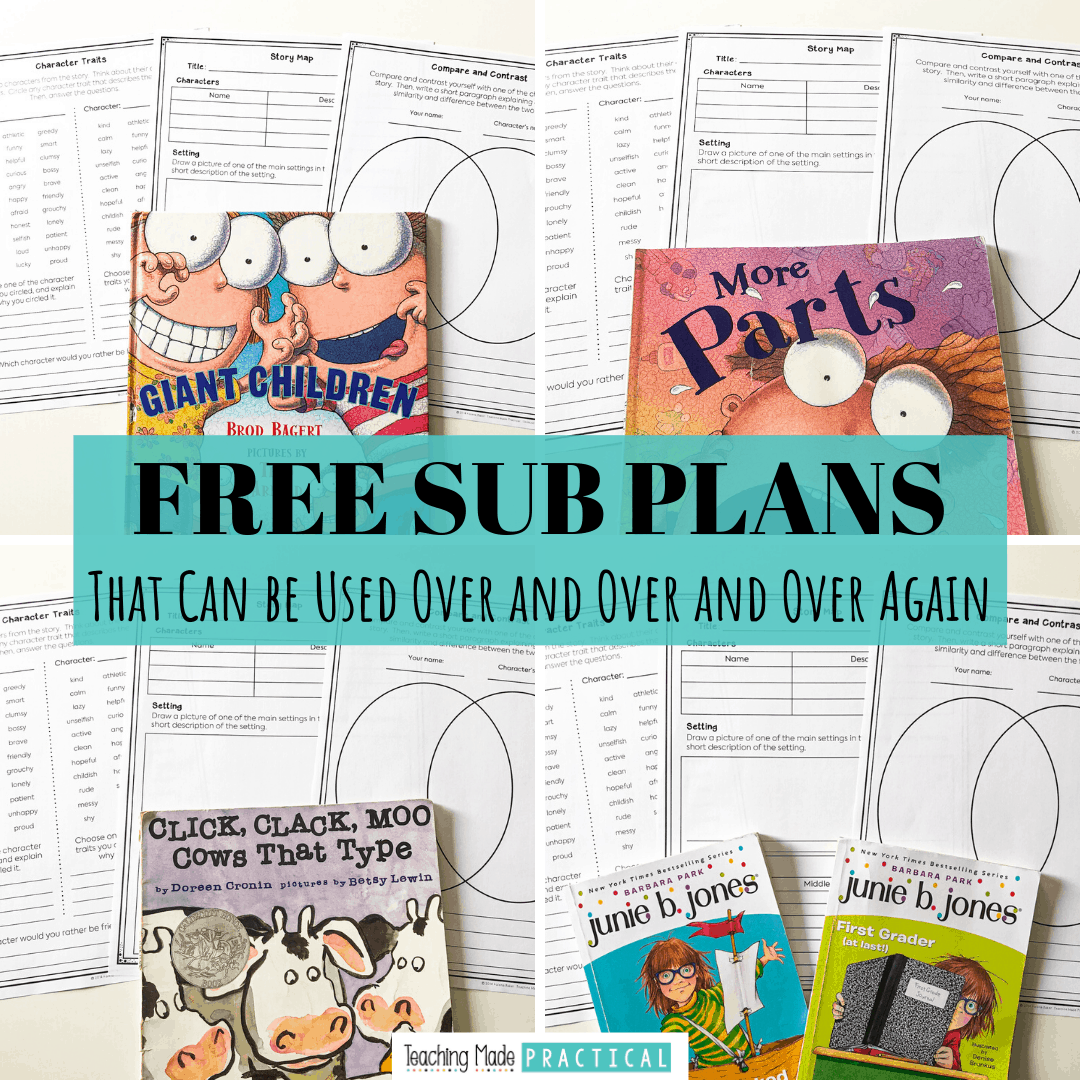
Written by guest blogger Cindy Koopmans
Our 3rd, 4th, and 5th grade students arrive in our classroom with lots of writing baggage that they’ve collected all throughout their elementary careers. With a little reflection and a solid plan, we can help students unpack some of those heavy suitcases and move them down the road toward clearer written expression.
You are the best person to create the plan. There are loads of pre-packaged programs available, but only you can decide what is right for you and right for your students.
My only goal is to challenge you to re-think a few things you’ve been doing that have perhaps perpetuated the bad habits you see in your students. As upper elementary grade teachers, we want to equip students to think and operate independently. We want to build their capacity and their confidence. We don’t want to be their crutch, instead we want to teach them to use their wings.
Teaching students to write is hard. Changing dyed in the wool bad habits in students is very hard. Teaching students to overcome those bad habits, adjust and refocus their attention so that they are able to write and edit their own writing is a thousand times harder.
So how can you do it? It begins with rethinking writing instruction and changing how you view student writing.
1. You can’t give ‘em a total make-over, but you can shift ‘em.
By the time students arrive in our classrooms they’re not wide-eyed, all-in, kindergarten types. Very few third, fourth, and fifth grade students come to us excited about the process of writing, but despite their pre-teen angst-y attitudes we can succeed in moving students toward the more proficient side of the writing continuum.
So please don’t set yourself up for disappointment by thinking that you are going to work miracles. But trust me. There’s a light up there in that student’s attic. You just have to make up your mind that you are going to do what it takes to turn that light on.
I love writing. My personal challenge is to convince my students that they should love it too.
#2. We can’t all be J.K. Rowling and that’s okay.
Some of your students will naturally love to write, while others will dread it. And while we want all of our students to have the skills and confidence to do whatever they want with their future, some students will not want to be writers no matter how many engaging strategies you use to teach writing.
Check out these tips for teaching writing to your reluctant and struggling students.
Take the classroom outdoors with these fun outdoor scavenger hunts that cover a variety of skills. The 8 scavenger hunts include:
- 5 senses scavenger hunt
- nouns and adjectives hunt
- math review
- living and nonliving
- syllable sort
- ...and more!
Get 8 scavenger hunts for $2.00 and enjoy some sunshine with your students!
3. This is what I’m doing and this is why I’m doing it.
One of the most powerful adjustments I’ve ever made to my instruction was to open up my thinking processes to my students. This is not simply in writing, but in all subject areas.
These strategies are commonly used in reading. They are called think-aloud strategies and they’ve gained a lot of traction because they help students with their reading comprehension. But because reading and writing are so intrinsically related, these strategies pack a lot of punch in writing instruction as well.
As I help students to become more confident writers, I often will model writing the first paragraph of an essay (you could also provide paragraph frames). Whether at the white board or on the document camera, the phrase, “This is what I am doing and this is why I am doing it,” is a call to pay attention. I’m sure I change the tone and timbre of my voice when I say these words.
Hands down, modeling and think-alouds have become the most efficient and effective method of walking my students into a new room of understanding about how to improve their writing. If this terminology is new to you, please take the time to read more about it here.
4. Teach the joy of writing because words are powerful.
While I honestly wish only those teachers who love to read and love to write would teach writing, that isn’t reality. We often must teach subjects we don’t entirely love and maybe those subjects in which we do not excel. And children have to learn to do things that they are not necessarily great at too!
So because you know how powerful it is to share your thinking with your students, share this idea too. Be transparent about your personal struggles with writing and explain to them why you seek to improve and how you are navigating that. Vulnerability is a sign of strength, not weakness.
We can all express our thoughts and feelings in such a way that they are clear to others, even if we are never published by Simon & Schuster. There is a unique and beautiful thing that happens when we dump the contents of our hearts and minds on a piece of paper. There is an easing of the soul that is like no other. I hope you understand the many benefits of keeping a personal journal. As much as you are able, articulate the wonders of this power to your students.
In my experience, lots of kids feel joy when getting together with a partner to exchange papers and read their own writing; however, quite a few students do not get joy from getting up in front of the class to read their papers aloud to their peers. For some students, this is actually a joy robber and one of the primary reasons they don’t enjoy writing. Who wants to be put on the spot?
But reading with a friendly partner does work well in my classroom. Set ground rules for respectful collaboration and stick to it.
And finally, be sure that you give students some options for creativity. Let them draw in their journals. Instead of a book report, allow students to create storyboards that have the characters telling the story in speech or thought bubbles.
This year, I’m going to use student blogs. Here’s some information from one of my favorite blogs, Cult of Pedagogy, about using student blogs creatively.
I’m also going to ask students to write reviews on Amazon for the books they read, which I call Choice Books. So get creative.
5. Plan Ahead and Set Clear Expecations
“If you fail to plan, you plan to fail.” These wise words from Benjamin Franklin ring true.
So, before starting the school year, sit down and reflect on what you want to see from your class in terms of conventions. Ask yourself whether or not you are happy with “invented” spelling (more on my philosophy about spelling in a minute) and handwriting. Consider your expectations regarding grammar, too.
Because in this teacher’s heart, I want it all perfect, but I know that perfection isn’t what I’m going to get. I need to pick my battles.
Then, as your year begins, set out your expectations and talk to your students about them all the time. Create an anchor chart, individual reference sheet for their notebooks, or a link to a Google Doc, but put it in writing somewhere and then stick to it. Share it or make it available to parents. Some years, I’ve had parents initial it. You choose.
So make your expectations clear, don’t compromise, and your students will rise to meet them. A wishy-washy teacher is frustrating to students. They really do want you to be firm and consistent. They really do.
6. Put the fun back in fluency
In order to learn to write, kids just have to write! And here’s the bottom line in writing fluency—journals. Not new, but tried and true. Kiddos need to write regularly. No getting around it.
Experience has taught me that it doesn’t really matter what they write about. I can hear some of you groaning as I write this, but there’s also no getting around the fact that you are going to have to read their journals and find the time to provide them with positive feedback on what they’ve written.
That’s right. Positive feedback.
I’ll admit that this is really hard for me. I’ve worked for many years looking for mistakes in other people’s writing. It's hard not to fixate on errors. I have to reframe my comments to students making sure that I stop to smell the roses and then write them a note to tell them how sweet they smell.
Here’s a veteran teacher tip: Set up a rotating schedule and read and mark 3-5 notebooks a day. Assign each student a day, make the student accountable for putting the notebook in a designated location, and keep track of who does and who doesn’t follow through.
I’ve had great success with purchasing composition notebooks for cheap and having them cut in half. It is intimidating to write a half page every night. And let students illustrate their writing. I don’t allow much drawing or artwork in my class because there simply isn’t time, but a cartoon in the margin of a journal? Those little bits of artwork break the monotony for me as well as for the writer. It’s fun!
Or go for an electronic journal. Whatever works for you with your style.
You see, It doesn’t really matter how you manage it, but you have got to get those kiddos expressing their own thoughts on a regular basis...nightly or a set number of times each week.
I post a prompt, but make it optional. Some kiddos use it and some come up with their own ideas.
And here’s the thing...you’ve got to keep a journal too. What you value, they value.
7. Suspend the Spelling
Spelling. I don’t teach it. In my opinion, spelling instruction after third grade is a waste of time...time that would be better spent writing. If you do teach spelling, take a minute and add up all the instructional time you devote to teaching it and testing it. Don’t forget to include the precious time it takes to mark papers. No matter what program you have for spelling, even if it is student-directed, someone is spending time and energy that could be better spent elsewhere.
Instead, be sure students know how to use a dictionary...online or old school...and then insist on good spelling. You aren’t abandoning good spelling, you are putting the onus on your students to take responsibility for their own spelling.
You may choose to determine what words are grade level appropriate and frequently used and have a list of those somewhere for reference. You might even spend five minutes a day orally drilling words that are frequently misspelled at your grade level. In my fifth grade class some of these words are beginning, reason, and does.
And even adults battle with their, there, and they’re so I take the time to teach those explicitly. I actually have a cute t-shirt I wear that gets the point across. You can find that here. And you can find other fun t-shirts that teach here.
You’re a professional. You know which hills to die on and which ones you don’t even desire to climb. With the exception of children who have an IEPs or struggle with dyslexia, most children's errors in spelling are a result of carelessness. I often catch students misspelling words that are literally an inch above where they are writing. I’ll bet you have too.
Listen, I know what I’ve presented here isn’t rocket science. On some level, you were aware of all the things I’ve discussed here. If you and I were sitting face-to-face right now I hope we would be having a lively discussion in which we respectfully disagreed on at least one of the points I have made.
So that’s what I was going for. I wanted to lean in and force you to rethink writing instruction and how you’ve taught writing in the past. If you have had even one small epiphany then I am happy.
I’ll end with a quote from one of my favorite fiction writers, Isabelle Allende:
I feel that writing is an act of hope, a sort of communion with our fellow men. The writer of good will carries a lamp to illuminate the dark corners. Only that, nothing more — a tiny beam of light to show some hidden aspect of reality, to help decipher and understand it and thus to initiate, if possible, a change in the conscience of some readers.
I’m hopeful that I’ve initiated some change in your conscience today.
You might also like these practical ways to integrate writing into your reading lessons.

Never Stress Over Sub Plans Again!

Make copies, find a fiction book, and you'll be ready for any emergency that comes your way!



